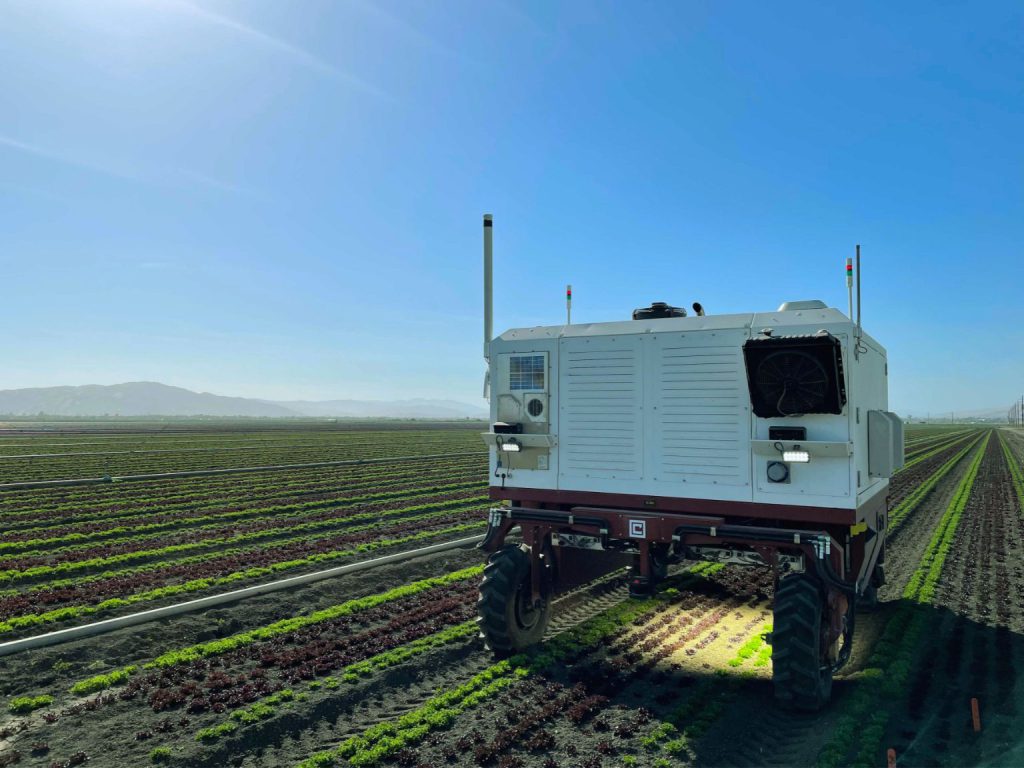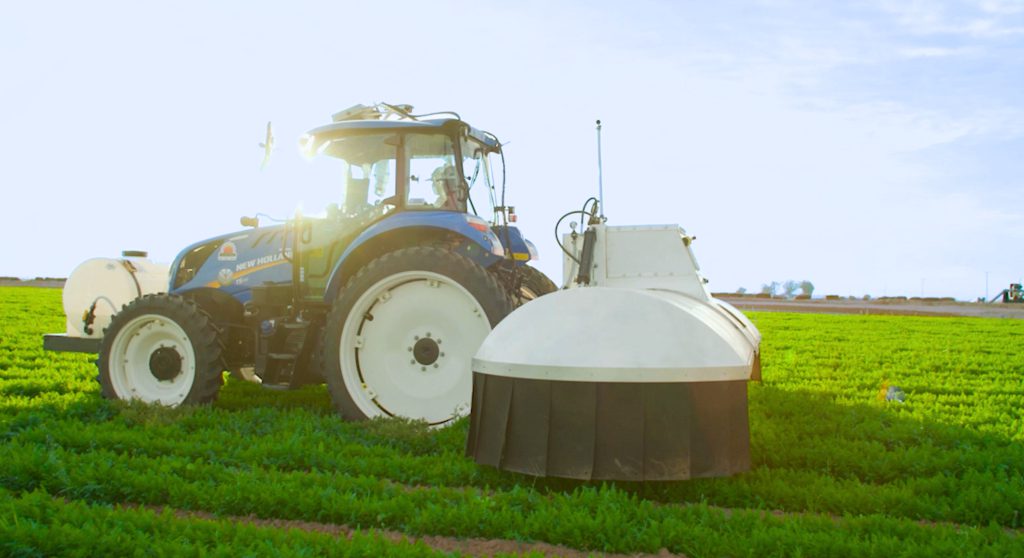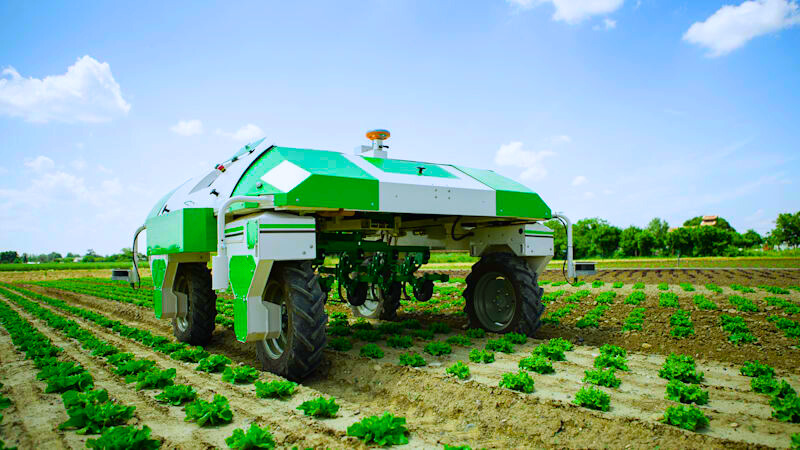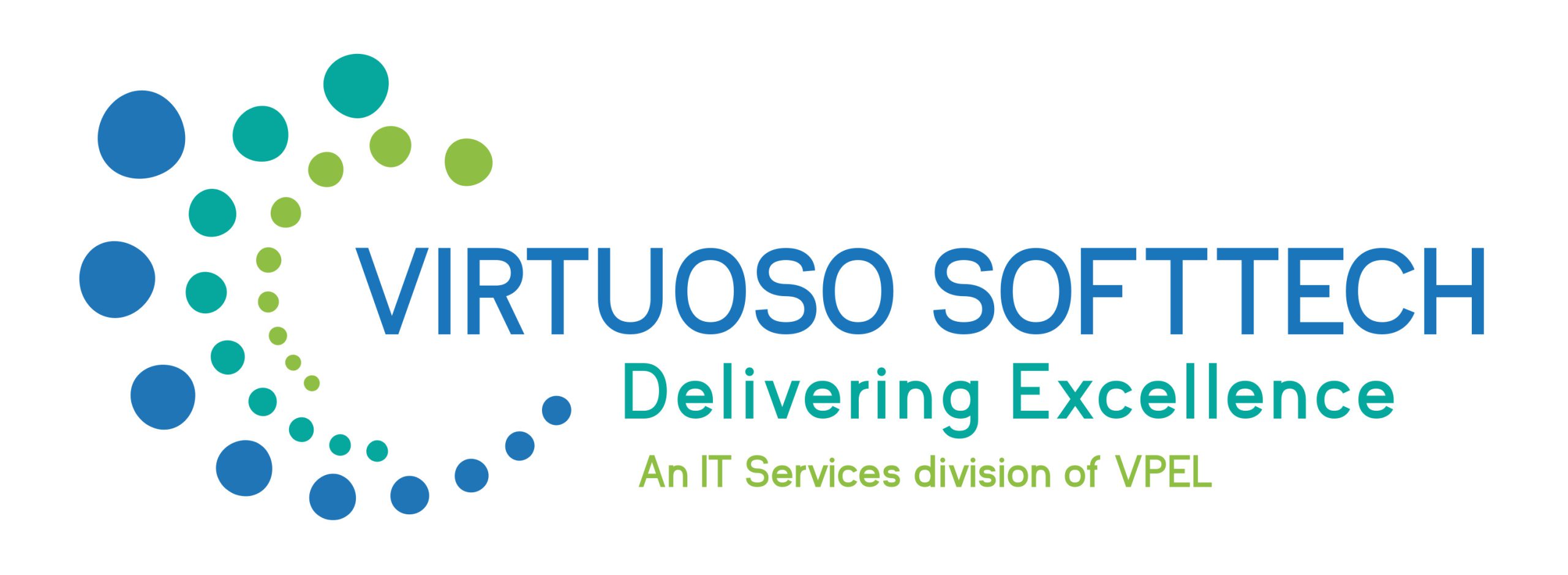Agriculture is one of the most important sectors in the world, providing food for billions of people. However, traditional agriculture practices such as the use of pesticides and herbicides can have negative effects on the environment and human health. Fortunately, advancements in artificial intelligence (AI) and machine learning (ML) are now making it possible to reduce the use of harmful chemicals in agriculture. In this blog, we will explore how AI and ML can be used in agriculture to avoid the use of pesticides and herbicides, and instead use camera-guided lasers to kill unnecessary plants and insects.

The problem with pesticides and herbicides
Pesticides and herbicides have been widely used in agriculture to protect crops from pests and weeds. However, these chemicals can have negative impacts on the environment and human health. Pesticides and herbicides can contaminate soil, water, and air, leading to the destruction of ecosystems and the loss of biodiversity. Additionally, exposure to pesticides and herbicides can cause health problems such as cancer, neurological disorders, and reproductive issues.
The use of AI and ML in agriculture
AI and ML are technologies that enable machines to learn from data and make predictions or decisions based on that data. These technologies have a wide range of applications, including in agriculture. By using AI and ML, farmers can collect and analyze data about their crops and the environment, and make more informed decisions about how to manage their land.
One way that AI and ML can be used in agriculture is to monitor crops and detect pests and diseases. For example, drones equipped with cameras and sensors can fly over fields and collect data about the health of crops. AI and ML algorithms can then analyze this data to identify any signs of pests or diseases. This can help farmers to quickly identify and respond to these issues, without having to rely on pesticides and herbicides.
Another way that AI and ML can be used in agriculture is to optimize the use of resources such as water and fertilizer. By collecting data about soil moisture, temperature, and nutrient levels, AI and ML algorithms can help farmers to determine the optimal amount of water and fertilizer to use for each crop. This can help to reduce waste and improve crop yields.
Using camera-guided lasers to kill unnecessary plants and insects

In addition to reducing the use of pesticides and herbicides, AI and ML can also be used to target specific plants and insects that are causing problems in a crop. One technology that is showing promise in this area is camera-guided lasers.
Camera-guided lasers work by using cameras and AI algorithms to identify specific plants or insects that need to be targeted. Once the target has been identified, a laser beam is directed at the plant or insect, killing it without harming surrounding plants or animals. This technology has several advantages over traditional methods of pest control:
→Targeted: Camera-guided lasers can target specific plants or insects, reducing the need for broad-spectrum pesticides and herbicides that can harm non-target organisms.
→Safe: Lasers are a safe and non-toxic method of pest control, reducing the risk of exposure to harmful chemicals.
→Efficient: Camera-guided lasers can quickly and efficiently target and eliminate pests, reducing the amount of time and resources needed to manage crops.
→Cost-effective: While the initial investment in camera-guided laser technology may be high, the long-term cost savings from reduced pesticide and herbicide use can be significant.
Future applications of AI and ML in agriculture
As AI and ML continue to evolve, there are many potential applications for these technologies in agriculture. For example, researchers are exploring the use of AI and ML to predict crop yields, identify optimal planting times, and even develop new crop varieties.

One promising area of research is the use of AI and ML to develop precision agriculture systems. Precision agriculture involves using data and technology to manage crops on a site-specific basis, rather than applying a one-size-fits-all approach. By using AI and ML to collect and analyze data about soil, weather, and crop growth, precision agriculture systems can help farmers make more informed decisions about how to manage their land. This can lead to more efficient use of resources, reduced waste, and improved crop yields.
Another area of research is the use of AI and ML to develop autonomous farming systems. Autonomous farming systems would use robots and drones to perform tasks such as planting, harvesting, and monitoring crops. By removing the need for human labor, autonomous farming systems could reduce costs and increase efficiency.
Bonus points
- Precision Agriculture: One promising application of AI in agriculture is precision farming. This involves using sensors, drones, and machine learning algorithms to optimize crop growth and reduce waste. For example, farmers can use drones equipped with cameras and AI to monitor crop health and detect early signs of disease or nutrient deficiencies. They can then adjust their fertilizer and pesticide application rates accordingly, reducing the amount of chemicals used and improving crop yields.
- Livestock Management: AI can also be used to optimize livestock management, by tracking animal behavior, health, and growth rates. For example, farmers can use sensors and AI to monitor the health of individual animals, detect early signs of disease, and adjust their feeding schedules and diets accordingly. This can help reduce the need for antibiotics and other medications, and improve overall animal welfare.
- Plant Breeding: AI can also be used to accelerate plant breeding and develop new crop varieties. Machine learning algorithms can analyze large datasets of genetic information and plant traits, to identify the best combinations of genes for desired traits such as drought tolerance or disease resistance. This can help breeders develop new varieties more quickly, and with greater precision.
- Climate Adaptation: AI can also help farmers adapt to climate change by predicting weather patterns, analyzing soil moisture levels, and identifying optimal planting times. This can help farmers avoid crop losses due to extreme weather events such as droughts or floods, and reduce water usage by optimizing irrigation.
Challenges and considerations
While AI and ML offer many potential benefits for agriculture, there are also challenges and considerations that need to be taken into account. One challenge is the need for high-quality data. AI and ML algorithms rely on large amounts of data to learn and make predictions. If the data is incomplete, inaccurate, or biased, the algorithms may not produce accurate results.
Another challenge is the need for specialized expertise. AI and ML algorithms can be complex and require specialized knowledge to develop and implement. Farmers and agricultural professionals may need to develop new skills and knowledge to effectively use these technologies.
Finally, there are ethical considerations to take into account. For example, there may be concerns about the use of autonomous farming systems and the potential impact on employment. Additionally, there may be concerns about the use of data in agriculture and the potential for data to be misused or exploited.
Conclusion
AI and ML offer many potential benefits for agriculture, including the ability to reduce the use of harmful chemicals and develop more efficient and sustainable farming practices. By using camera-guided lasers to target specific plants and insects, farmers can reduce the need for broad-spectrum pesticides and herbicides, while still effectively managing their crops. As these technologies continue to evolve, there are many exciting opportunities for agriculture to become more efficient, sustainable, and productive. However, it is important to consider the challenges and ethical considerations involved in implementing these technologies and ensure that they are used in a responsible and sustainable way.



